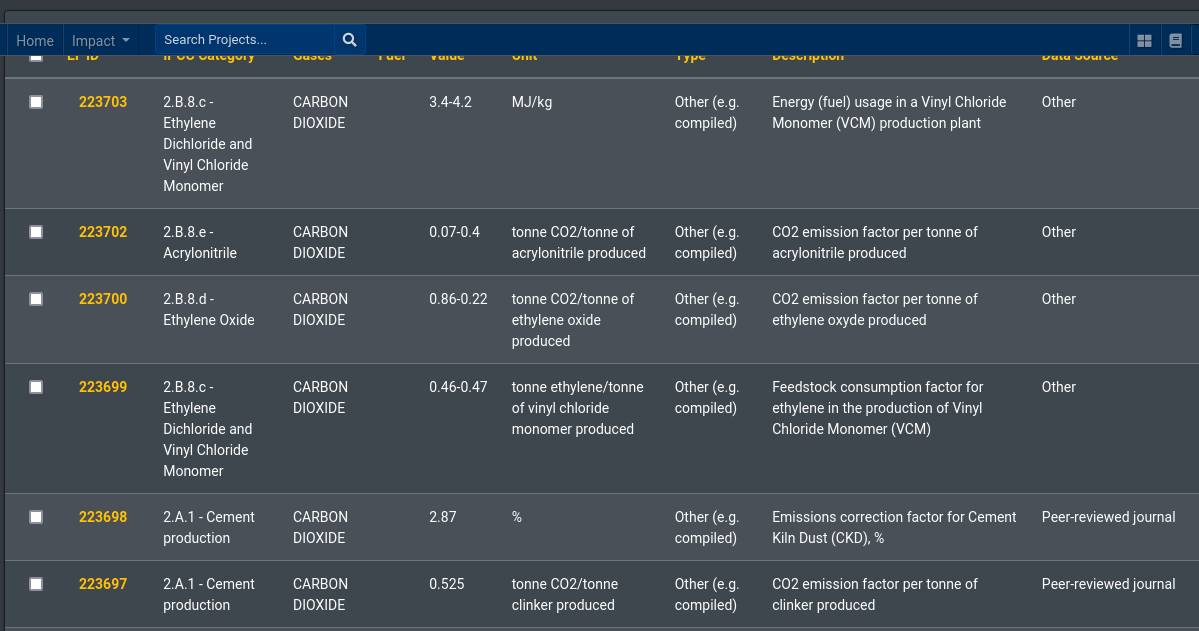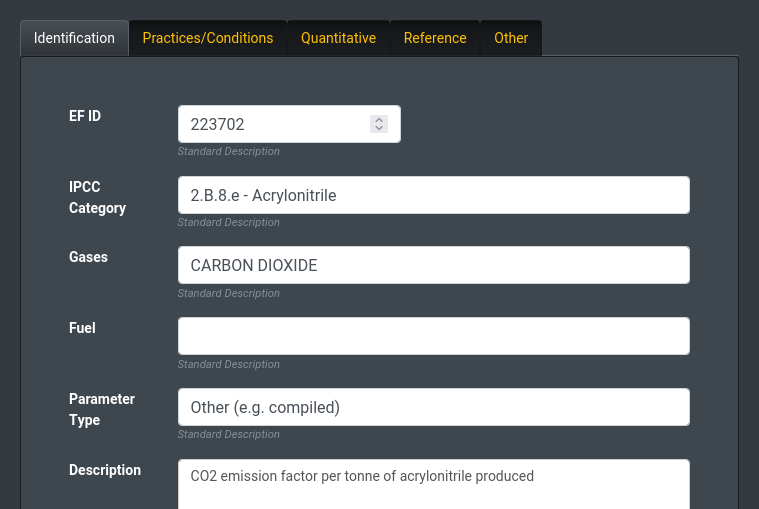Integrating the IPCC Emissions Factors Database Into Equinox
In the latest update of the Equinox Project we discuss the integration of reference data an in particular greenhouse gas emissions factors as catalogued in the IPCC Emissions Factors database (EFDB).
Equinox is an open source platform that supports the holistic risk management and reporting of major sustainable finance projects (the financing of projects with material physical footprint) such as project finance.
Equinox aims to integrate in the database a number reference databases that facilitate tasks of sustainable portfolio management. In the current focus such reference material concerns the emissions factors for various processes and activities. In the latest (Solstice Day!) update of the Equinox Project we discuss the integration of reference data an in particular greenhouse gas emissions factors as catalogued in the IPCC Emissions Factors database (EFDB).
Emissions Factors
Sources of emissions factors include:
- IPCC, Guidelines for National Greenhouse Gas Inventories (2006)
- IPCC, Emission Factor Database
- Country-specific emission factors from national inventories, reports, and guidelines
- Emission factors contained in the GHG Protocol calculation tools and guidance
- The GHG Protocol for Project Accounting and the related GHG Protocol Guidelines for Quantifying GHG Reductions from Grid-Connected Electricity Projects (if applicable)
- CDM databases and the CDM Tool to Calculate the Emission Factor for an Electricity System
The IPCC EFDB Database
The overall objective of the EFDB is to be an always up-to-date companion for the IPCC Guidelines for National Greenhouse Gas Inventory that is seen as a worldwide resource for greenhouse gas inventory developers.
The EFDB has the objective to provide a variety of users, in particular the inventory compilers of the Parties to the UNFCCC, with current and well-documented emission factors and other parameters, as well as to establish a communication platform for distributing and commenting on new research and measurement data. Such a platform can provide an efficient means for experts and researchers to disseminate new emission factors or other parameters in a timely manner to a worldwide audience of potential end users. The EFDB is meant to be a recognised data repository where users can find emission factors and other parameters with background documentation or technical references.
EFDB Database Access
- Online access to the EFDB Database is available here
- The EFDB Database is available for offline use in IPCC Downloads
Equinox incorporates the EFDB database in its entirety to enable internal use of its data.

EFDB Database Structure
The database structure is in the form of a long database table (~17K entries, one per emissions factor). For each emissions factor the following data are provided
- EF ID
- IPCC Categories
- Gases
- Fuel
- Type of parameter
- Description
- Technologies/Practices
- Parameters/Conditions
- Region/Regional Conditions
- Abatement/Control Technologies
- Other properties
- Value
- Unit
- Equation
- IPCC Worksheet
- Source of data
- Technical reference
- Abstract in English
- Uncertainty lower
- Uncertainty upper
- Data quality
- Data quality reference
- Other info on data quality
- Comments from the data provider
- Comments from others
- Data provider
- Link
EFDB Data Groups
To improve the readability of the internal representation the data are grouped in the following categories:
- Identification of the Emissions Factor: (ID, Gas / Fuel, IPCC Category, Description)
- Practices/Conditions: (Regional or Technology Conditions and Details)
- Quantitative: (The value, range, units and uncertainty)
- Reference: (Data sources, references, links etc)
- Other: Any other attribute not fitting in the above

Learn more about Equinox
- The equinox code repository is here.
- A demo equinox point is available (access is by arrangement only - contact us)